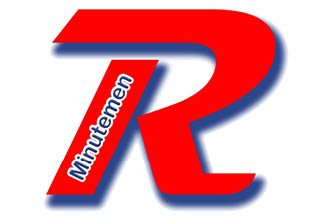New grants fund outdoor learning opportunities at Bath Elementary
by Wendy Turrell
Bath Elementary School recently received two Educator Initiative Grants from the GAR Foundation that will fund new programs for science and language arts curriculums in the Outdoor Learning Lab.
Bath Elementary Principal Dan Fry said the $8,850 “Not all Classrooms Have 4 Walls” grant will support the fourth-grade science unit that studies native Ohio birds and the adaptations they use to survive. The $9,990 “Just in Case You Find a Tree” grant will support lessons in both English language arts and social emotional learning programs.
Fourth-grade math and science teacher Michelle George wrote the “Not All Classrooms Have 4 Walls” grant, which she designed as an extension of a fourth-grade science unit. Fry said the grant’s purpose was to create a space in the Land Lab for kids to be immersed in learning, instead of just reading about native birds.
“The goal is to develop a bird-feeding station with multiple feeders that the students will be responsible for observing and maintaining. We will also have a live-feed camera on the feeding station so that students can monitor which birds are feeding, which feeders they prefer, what time of day they are feeding, how much seed is being eaten, etc.,” said Fry. “The students will track data and research which type of feeders and seed are needed to match the adaptation needs of each variety of bird.”
The “Just in Case You Find a Tree” grant will fund projects to help students develop self-regulation and awareness skills, as well as an appreciation for nature. Intervention specialist Emily Sokolowski and school counselor Kristi Kerrigan wrote the grant, and Fry expressed his appreciation to GAR Foundation employee Lucille Esposito for her assistance in the grant process.
Fry said the money will be used to purchase hammocks, camp chairs, yoga mats, and other comfortable seating that will be set up in wooded sections of the Outdoor Learning Lab. “It will be a quiet space for students to read, decompress, and observe nature,” said Fry.
Work will begin on the grant additions to the Land Lab in the fall. The live-stream bird station will be installed behind the pavilion at the entrance to the Land Lab, and more bird feeding stations will be constructed throughout the grounds. Additional seating will be set up among the trees at the back of the Land Lab.
Since the reconstruction and expansion of the Outdoor Learning Lab last year, Fry said more third- through fifth-grade students have been able to experience learning in a real-world environment. Science teachers have integrated the Land Lab into appropriate science units to enhance the connections students make to the curriculum.
Outdoor learning opportunities continue to evolve. “In the spring, we started our growing spaces garden and a pollinator garden for our third-grade classes,” Fry explained. “We are also waiting for the arrival of our curriculum boards, which will provide spaces throughout the Lab for students to learn from permanent displays and share their own learning through QR codes, posters, etc.” ∞

